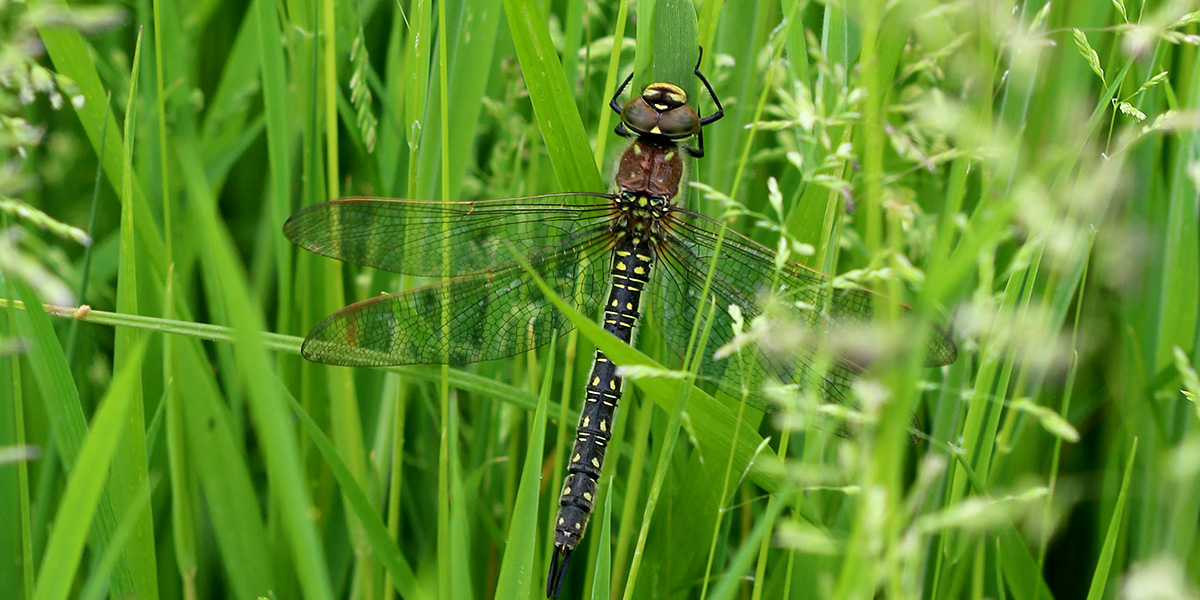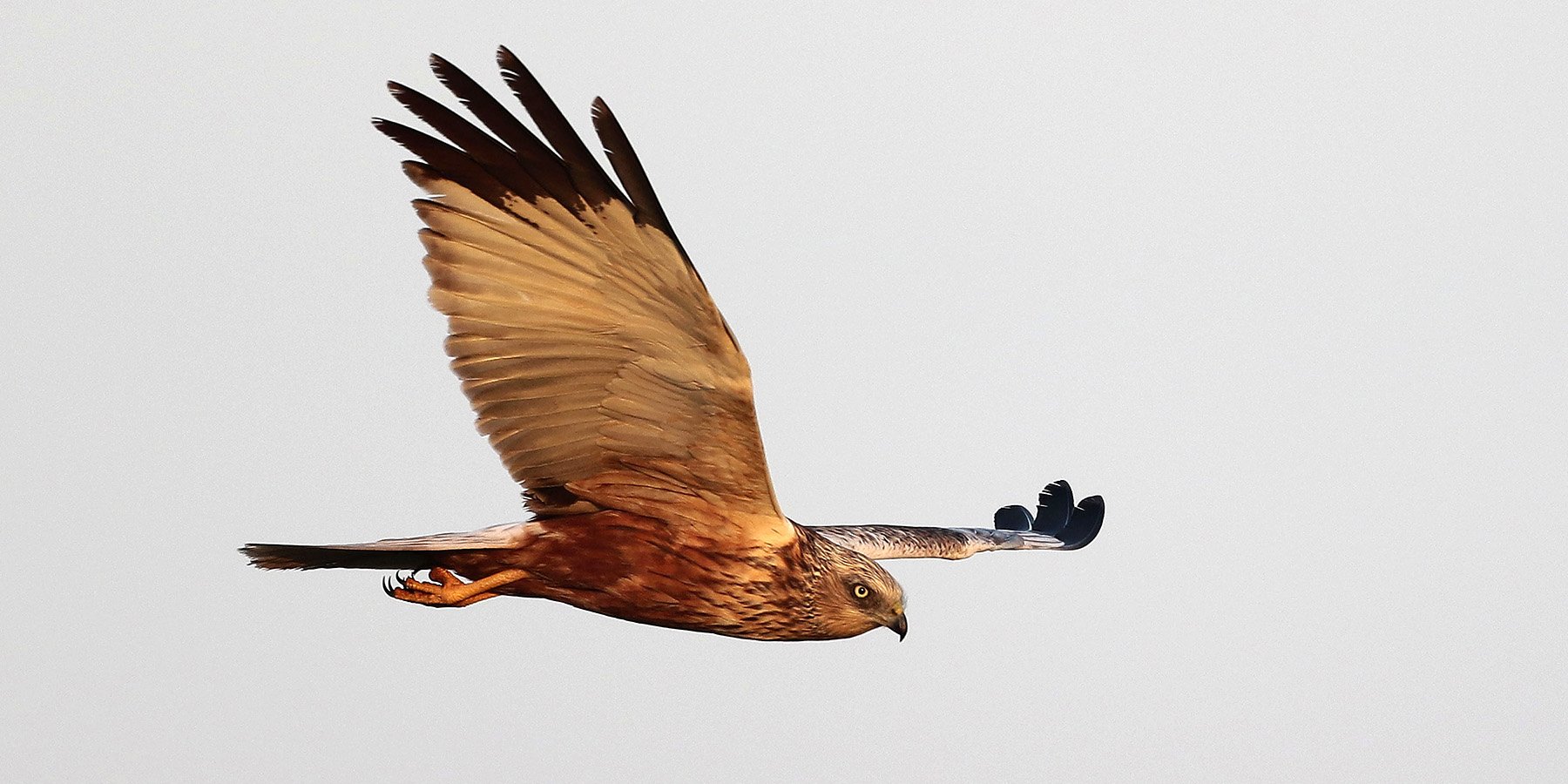Take a walk on the Levels in late April or early May and you may be lucky enough to encounter one of our most beautiful insects, the Hairy Dragonfly (Brachytron pratense).
Until recently, this small dragonfly was rare in the UK, being found mostly on the south coast in Sussex and Kent, on the Somerset and Gwent Levels, and parts of Pembrokeshire. Over recent years it has benefited from milder winters and warmer summers and has spread across southern Britain. It is now found as far west as Ireland and has reached the west coast of Scotland.
The Hairy Dragonfly is aptly named. Males have a noticeably downy thorax (the middle section of the body), while females also have a hairy abdomen. Males and females are relatively easy to tell apart; males have pairs of blue spots along the abdomen, two green stripes on the top of the thorax, and striking blue eyes; females have pairs of yellow spots along the abdomen and brown eyes.
Hairy Dragonflies belong to a group called the ‘hawkers’, which, true to their name, spend much of their time as adults on the wing (‘hawking’), patrolling a territory, feeding or looking for a mate. This group includes some of our largest dragonflies, such as the Emperor Dragonfly, Brown Hawker and Southern Hawker. Hairy Dragonflies are the smallest members of the group.
The Levels has long been a stronghold for this species, as they favour areas with unpolluted, still or slow-flowing water with lots of natural vegetation. They are often associated with grazing marshes, but can also be found along canals and slow-flowing rivers, flooded gravel pits and lakes.
Hairy Dragonflies are one of the first species to emerge and adults can usually be seen from end of April through to early July.
Record your sightings
Think you’ve seen a hairy dragonfly? It’s important to record wildlife sightings with South East Wales Biological Recording Centre, which stores, manages and shares wildlife records from across the region. Follow the link below to find out how to record sightings.
Other Levels dragonflies
Where to see…
Great Traston Meadows SSSI (Gwent Wildlife Trust)
Magor Marsh (Gwent Wildlife Trust)
What to look for…
Male’s have blue eyes, green stripes on thorax and pairs of blue spots along the abdomen.
Females have brown eyes and yellow spots along the abdomen.
Look for them along reens and flooded ditches between end of April and early July on warm, sunny days.

















